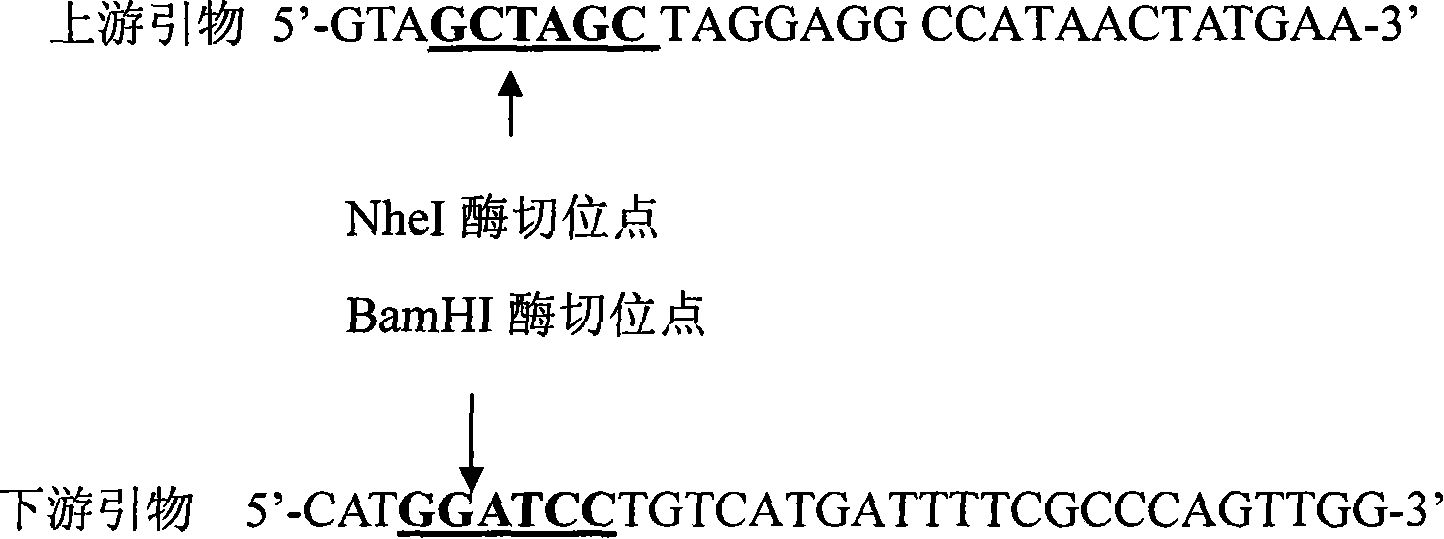1,3-methyl glycol oxidoreductase isozyme variant gene and uses thereof
A technology of propylene glycol and reductase, which is applied in 1 field, can solve problems such as constraints and poor catalytic activity, and achieve the effect of high catalytic activity and broad application prospects
- Summary
- Abstract
- Description
- Claims
- Application Information
AI Technical Summary
Problems solved by technology
Method used
Image
Examples
Embodiment Construction
[0008] Below are embodiments of the present invention:
[0009] 1. Design of error-prone PCR primers and acquisition of PCR amplification products:
[0010] According to the gene design of 1,3-propanediol reductase isoenzyme, BamHI and NheI sites were respectively introduced at the 5' end of the primers for the convenience of subsequent operations.
[0011]
[0012] Add 100 pmol of dNTPs to a 500 μl eppendorf tube, 20 pmol each of upstream primer, downstream primer, approximately 1 ng pET28α(+)yqhD as template DNA, and a final concentration of 0.05 mM MnCl 2 , 2.5uTaq DNA polymerase, 5μl PCR buffer, 12.5μl 25mM MgCl 2 , and then add sterile distilled water to a total volume of 50 μl. The reaction parameters were denaturation at 95°C for 5 minutes, followed by 35 cycles at 95°C for 1 min, 54°C for 2 min, and 72°C for 1 min, and then extended at 72°C for 2 min to obtain PCR amplification products.
[0013] 2. Construction of mutant library:
[0014] The error-prone PCR am...
PUM
 Login to View More
Login to View More Abstract
Description
Claims
Application Information
 Login to View More
Login to View More - R&D
- Intellectual Property
- Life Sciences
- Materials
- Tech Scout
- Unparalleled Data Quality
- Higher Quality Content
- 60% Fewer Hallucinations
Browse by: Latest US Patents, China's latest patents, Technical Efficacy Thesaurus, Application Domain, Technology Topic, Popular Technical Reports.
© 2025 PatSnap. All rights reserved.Legal|Privacy policy|Modern Slavery Act Transparency Statement|Sitemap|About US| Contact US: help@patsnap.com

